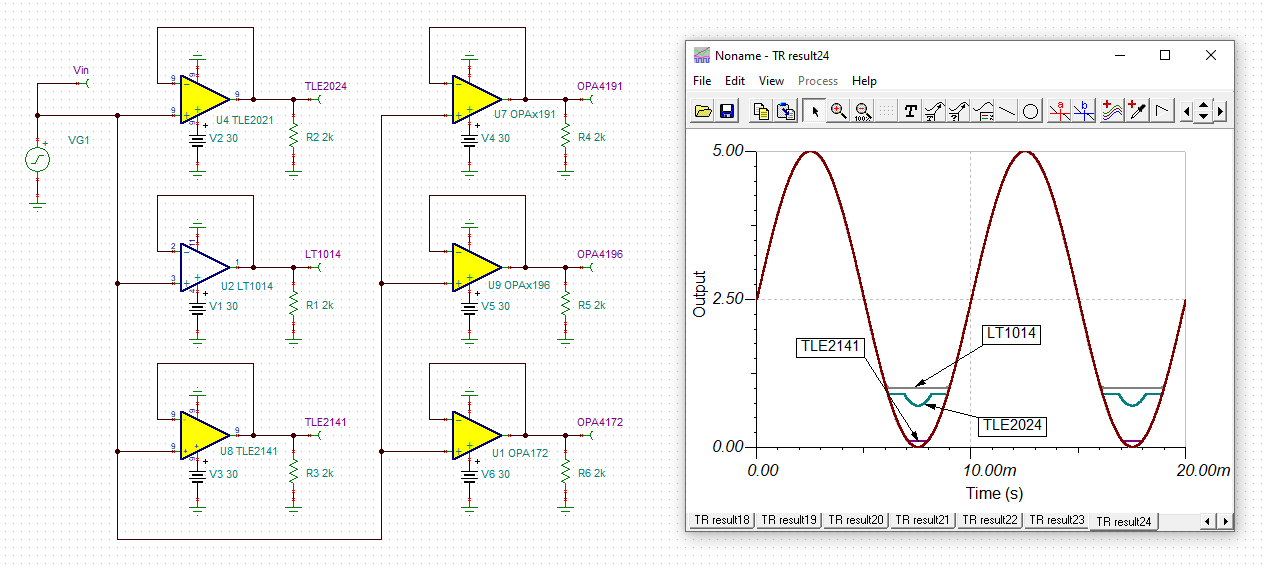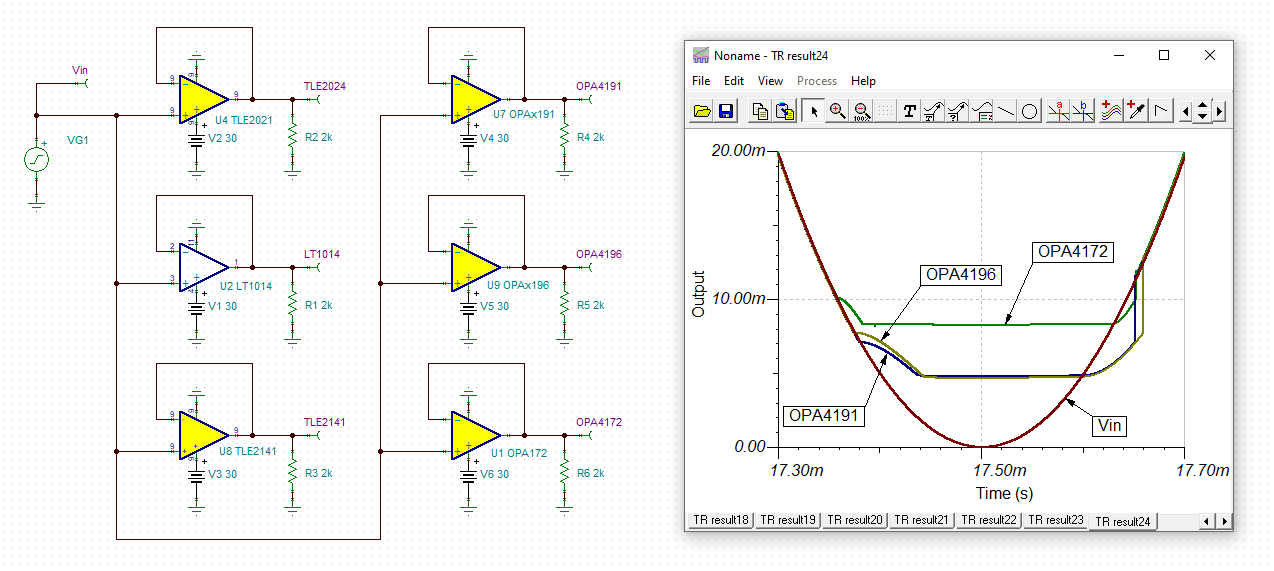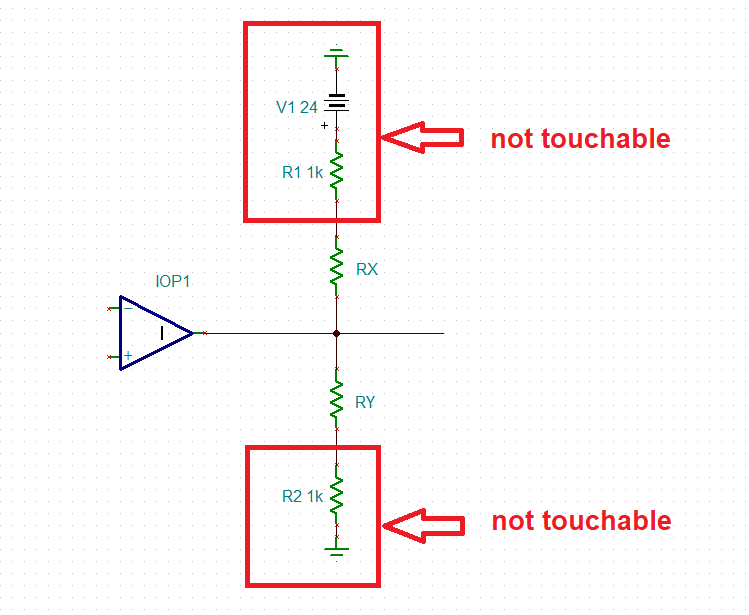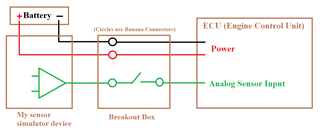Hi,
I need to protect multiple (40pcs) 5V level analog outputs against to ESD and Short to Battery/Ground failures.
This is an automotive system (ECU test device) and the battery is 12V or 24V level. It will be good to protect up to 36V shorts.
I think the best way to do this using voltage follower configured opamps that supplied by battery voltage.
Some opamp datasheets states that capable of continuously shorted to either supply in the dissipation ratings.
I'm not prefer to use heatsink but possible.
In short my requirements;
- 36V or more single supply,
- Opamp output max current rating may be 25mA or more,
- Input common mode range must include 0V-5V range,
- Outputs must be shortable (continuously preferred) to either supply,
- Outputs should be protected to ESD (no need to comply with any standard but should be durable)
Additional ESD protection devices not preferred but possible.
- Multiple packaged versions are better, I prefer quad versions.
I have checked following devices;
TLE2024AMDW : ESD ratings are not specified in the datasheet
OPA4191IDR : Only short to ground specified, Short to V+ is not
OPA4172IPW : Only short to ground specified, Short to V+ is not
LT1014DMDWREP : ESD ratings are not specified in the datasheet
OPA4196ID : Only short to ground specified, Short to V+ is not
Do you have better alternatives for this requirements?
Regards





